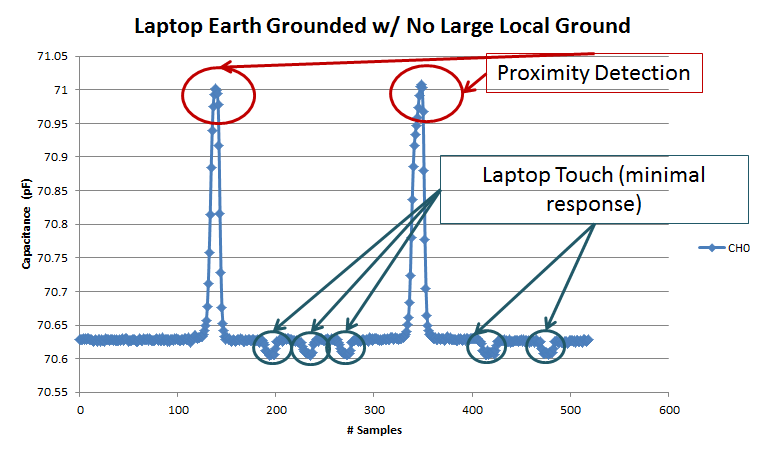SNOA952 May 2016 FDC2112 , FDC2112-Q1 , FDC2114 , FDC2114-Q1 , FDC2212 , FDC2212-Q1 , FDC2214 , FDC2214-Q1
3.1 Earth Ground Referenced Laptop
In this scenario, the laptop is connected to earth ground. Because the FDC2214 EVM is getting its ground from the laptop, that means the reference ground for the FDC device is also at earth ground. Figure 6 shows there is still minor ground shifting when a hand touches the laptop. This is due to the fact that the wire connecting earth ground to the EVM is very long (71 cm) and has its own parasitic capacitance, resistance, and inductance. A shorter wire connecting system ground to earth ground minimizes these parasitics as well as the significance of the ground shift effect.
 Figure 6. Capacitance Measurements of the System With the Laptop Referenced to Earth Ground and No Nearby Large Local Ground
Figure 6. Capacitance Measurements of the System With the Laptop Referenced to Earth Ground and No Nearby Large Local Ground The total capacitance change of the proximity detection at 10 cm is around 0.37 pF while the total capacitance change for the laptop touch is around 0.02 pF. Because this total capacitance change of the proximity detection is almost twenty times that of the laptop touch and opposite in magnitude, the ground shift does not interfere with proximity detection and can be easily compensated for in the software.